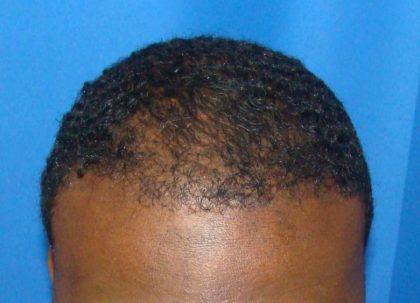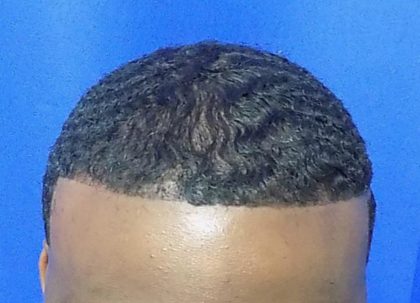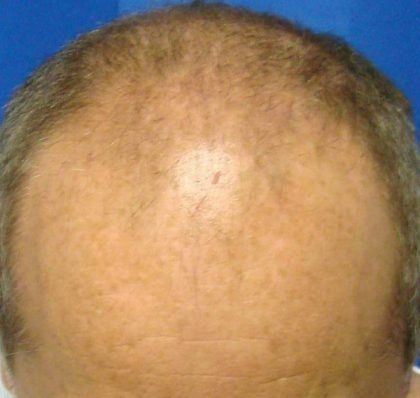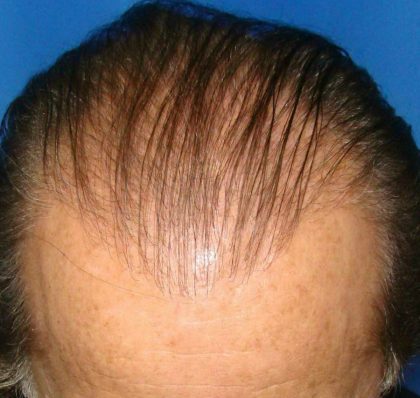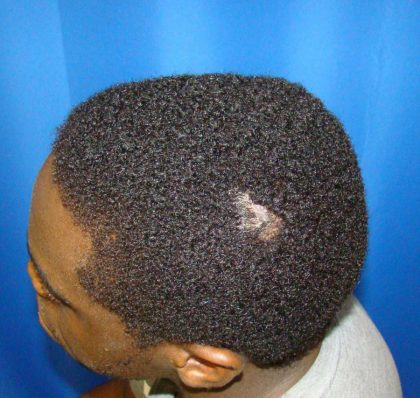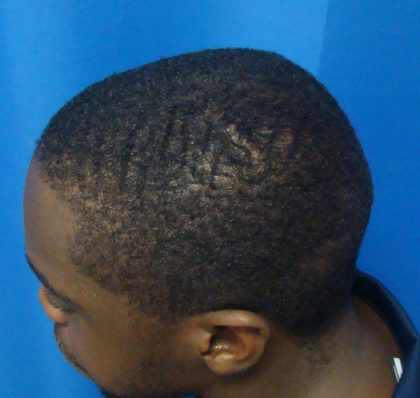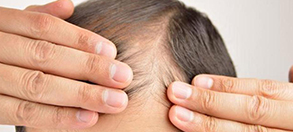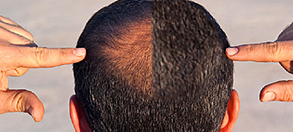A hair transplant is a minimally invasive procedure that can give you permanent hair restoration with the fullness and growth of your own hair follicles. Most surgeons now stand by the effectiveness and excellent results of FUE (follicular unit extraction), a method that involves individually taking follicles from the back side of the scalp and reinserting them into the crown, hairline, or any other areas of hair loss. With the advanced, no linear scar, no stitch FUE technique, patients no longer have to worry about a long, visible scar on their head. Instead, the pin-point scars are well-hidden by surrounding hair, and the transplanted follicles grow hair that looks remarkably natural in their new location.
At Houston Hair Transplant Center, we want to extend our services to as many hair loss patients as possible, including those in the great neighboring State of Louisiana. Our office is located in Houston, TX- internationally known for its medical tourism industry and widely recognized as a sought-after destination for cosmetic procedures. Because of this, Houston Hair Transplant Center works to refine our practices to meet and exceed the needs of our patients. Our staff is led by the knowledge and experience of double-board certified hair restoration specialist Dr. Goran Jezic, and Josh Simpson, PA-C, a Johns Hopkins-trained physician’s assistant with several years of experience in FUE hair transplants and hair restoration.
To learn more about your options, please call (713) 864-2300, visit one of our locations in Houston and Austin, TX, or use our contact form. A member of Dr. Jezic’s team will gladly help with answering any questions or scheduling your consultation.
Out-of-state patients may want to consider a virtual consultation with Dr. Jezic. Your dreams of feeling like the confident and attractive version of yourself are just one step away.
Before and After Photos
How Does FUE Work?
FUE works when viable, living hair follicles are harvested from the donor area (back and sides of the head) and transplanted into the thinning and balding areas. One by one, a clinician physically harvests and extracts each follicular unit as a whole, with all parts included: the hair shaft/s themselves, the sebaceous gland that secretes oil, the microscopic arrector pili muscle that contracts the hair, and the matrix that contains all of the hair-creating cells.
The most reliable donor site for harvesting healthy follicles is always the back and side of the scalp for a few reasons. For one, these sections of the head do not respond to fluctuations in androgen hormones, the main culprit for the most common type of hair loss- androgenic alopecia. In men, this condition may look like gradual, stable hair loss around the hairline or crown, whereas women usually experience it in the crown. Patients with androgenic alopecia, or male/female-patterned hair loss can get dramatic results with FUE. If you have experienced this kind of hair loss, you’re not alone. Roughly 85% of men and about 40% of women will notice this type of thinning within their lifetime. (1)
In an FUE procedure, our team makes dot-like incisions of 1 mm or less to extract the entirety of each follicle. (2) With this method, scarring is extremely minimal (there is no linear scarring), and patients have the option to wear their hair short without the worry of noticeable scars. With newer devices like NeoGraft, we can now extract the follicular unit and harvest it with suction in one step, reducing overall procedure time. Another reliable and high-tech device is the ATERA system, which offers a more customizable approach with 3 follicle punch sizes and a system that also uses suction but moisturizes and counts each follicle graft.
Am I a Good Candidate for FUE Hair Transplants?
Many factors can contribute to hair loss, so Dr. Jezic needs to evaluate your overall health to see if you will benefit from FUE. For the most part, FUE is recommended for patients with a predictable, patterned form of hair loss like androgenic alopecia. Those with a condition called diffuse unpatterned alopecia (DUPA) tend to have random hair loss, so finding a viable donor area for follicle harvesting may not be feasible.
Ideally, you should be a non-smoker since smoking and nicotine products can negatively affect your healing processes and circulation. If you are a smoker, then you would need to cease smoking a couple of weeks leading up to your procedure. Finally, if you are under the age of 21, you may have a more progressive hair loss that may not produce the permanent results you’re searching for. Hair Transplants restore lost hair – they don’t prevent hair loss. Dr. Jezic will help you find alternative treatments to slow down and stabilize the condition.
To make sure you are a good candidate for FUE, Dr. Jezic may perform a FOX test, a relatively easy procedure in which he will extract a few follicles from the donor site to ensure they are healthy and complete. (3)
Personal Consultation
Scheduling a consultation at Houston Hair Transplant Center, you can expect personalized guidance regarding your hair loss. Dr. Jezic spends a significant amount of time with each patient, ensuring they understand the procedure, how to prepare, and what steps they need to take to maximize their hair growth.
During this first appointment, Dr. Jezic will review your medical history and examine the severity of your hair loss and your experience with it throughout the years. He can also gain a more accurate idea of how to replenish your hairline and come up with a plan to promote the most natural-looking hairline possible. If the crown is your area of concern, he can discuss with you the intricacies of providing more fullness in this particular spot. He can also outline the advantages of different FUE devices such as NeoGraft and ATERA and discuss which one may be most beneficial for your unique case.
Hair Restoration: From Louisiana to Houston
Dr. Jezic has experience treating patients from all over the U.S., including men and women from New Orleans, Baton Rouge and other cities/towns in Louisiana, only a 2-hour car ride away from his practice in Houston. If you are ready to begin your journey toward renewed confidence and a more youthful, full head of hair, contact our offices in Austin and Houston at (713) 864-2300 or submit your interest through our online form today.
Virtual Consultations for Louisiana Patients
If you are from Louisiana and can’t make it to one of Dr. Jezic’s offices, you have the option of requesting a virtual consultation. With this type of appointment, Dr. Jezic will make sure to get as much information about you as possible through an online platform such as FaceTime, Skype, Zoom, or another TeleHealth platform. He will require that you submit photos of your hair loss before this video-based consultation.
Preparation
FUE is a minimally invasive procedure that doesn’t require extensive preparation, but still, patients should take extra care to help promote scalp health beforehand. About 2 weeks before your scheduled procedure, you should avoid consuming any nicotine products that can constrict your blood vessels and slow down your recovery. You should consult Dr. Jezic on which medications and supplements to avoid since some may have blood-thinning properties that can cause more bleeding than expected. About 48 hours before your procedure, you should refrain from drinking any alcoholic beverages that can also have a blood-thinning effect.
What to Expect During an FUE Procedure
Though FUE is minimally invasive, the procedure can be lengthy and take several hours. First, Dr. Jezic will shave an area on the back of the head and administer local anesthesia. He will then make pinhole-like incisions that will extract each follicle one by one. As the NeoGraft or ATERA device makes these incisions, they suction the follicles into a container with a preserving solution. Once Dr. Jezic and his skilled hair restoration technicians attain the necessary amount of grafts, they will begin the second part of the procedure.
He will make tiny incisions within the areas of hair loss so he can place each follicle within its respective hole. Dr. Jezic will pay close attention to the existing pattern of your hair growth, ensuring that he strategically creates the most natural appearance. After your procedure, you will be a bit swollen and tender, but you will be able to take doctor-approved over-the-counter medications to get you through the discomfort of the first couple of days.
Recovery and Results
Although you’ll only need a couple of days of downtime, you will need to be extra gentle with your scalp in the following weeks post-procedure. You should avoid wetting your head, sweating, and working out for about 1 week. For the first three weeks, you should avoid scratching your scalp or brushing your hair. For roughly two months, you should be mindful of only using mild soaps and shampoos. At some point, you may notice that your hair loss increases; this is a completely normal condition called “shock loss” which is temporary. Within four months post-procedure, your hair will begin to recover and show signs of new growth. After about six months, you will get to enjoy the final results of fuller, denser hair.
Cost of a Hair Transplant in Houston
Whether you are a neighboring Louisiana resident or an international visitor coming to this hotspot for cosmetic surgery, Dr. Jezic can help you. He will provide you with a total cost estimate during your consultation after he determines the number of grafts you’ll require to achieve the results you’re looking for.
To get started today, call (713) 864-2300 or inquire online. To learn more about the procedure itself and our unique approaches at Houston Hair Transplant Center, visit our blog.
References
- Zito PM, Raggio BS. Hair Transplantation. PubMed. Published 2021. https://www.ncbi.nlm.nih.gov/books/NBK547740/
- Rose P. Hair restoration surgery: challenges and solutions. Clinical, Cosmetic and Investigational Dermatology. Published online July 2015:361. doi:https://doi.org/10.2147/ccid.s53980
- Dua A, Dua K. Follicular unit extraction hair transplant. Journal of cutaneous and aesthetic surgery. 2010;3(2):76-81. doi:https://doi.org/10.4103/0974-2077.69015
